Key takeaways
- The Yeti phenomenon blends folklore and cultural identity, illustrating humanity’s fascination with the unknown and the natural world.
- Respect for local knowledge and traditions is essential in understanding the complexities of the Yeti narrative and Himalayan culture.
- Researching the Yeti involves a delicate balance between scientific inquiry and openness to cultural insights and local legends.
- Patience and humility are vital in the pursuit of elusive evidence, highlighting the journey’s value over concrete findings.
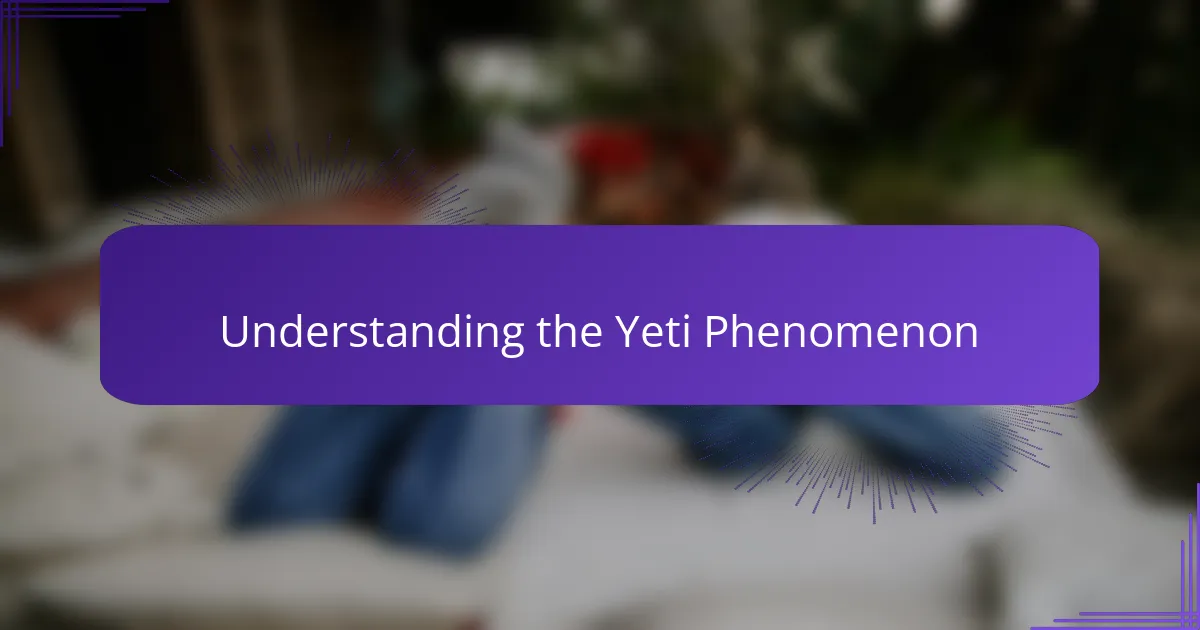
Understanding the Yeti Phenomenon
What exactly is the Yeti? To me, it’s more than just a mythical creature; it embodies the mysterious allure of the Himalayas. When I first heard stories from local villagers, I felt their deep-rooted belief wasn’t mere superstition but a connection to something ancient and unexplained.
During my research, I asked myself, why do these tales persist despite the lack of concrete evidence? Maybe it’s the human need to believe in the unknown or perhaps the Yeti symbolizes our respect for nature’s untamed wilderness. This question kept me digging deeper, blending scientific inquiry with cultural understanding.
The Yeti phenomenon, I realized, isn’t just about footprints in the snow or blurry photos. It’s woven into the fabric of Himalayan culture, shaping rituals and stories passed down generations. Encountering this made me appreciate how folklore and reality often blur, inviting us to explore with both skepticism and wonder.
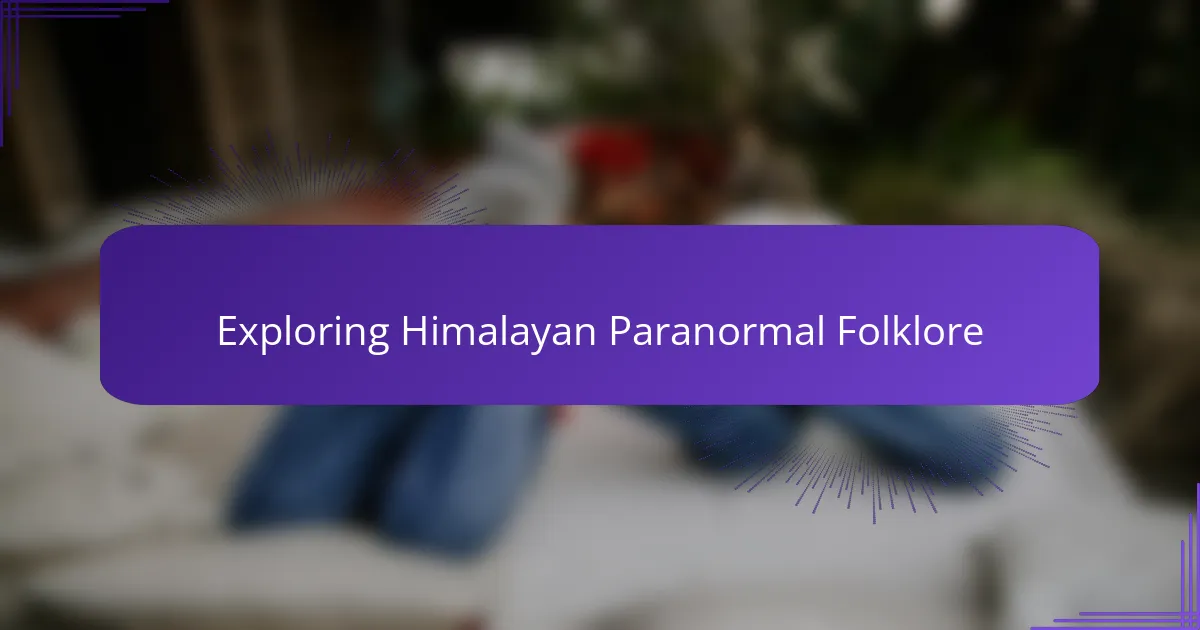
Exploring Himalayan Paranormal Folklore
Diving into Himalayan paranormal folklore felt like stepping into a living tapestry of stories that pulse with both fear and fascination. I remember sitting by a fire with villagers who spoke of shadowy figures and eerie sounds echoing through the mountains—tales that seemed as real to them as the starlit sky above. It made me wonder: How much of what we call “paranormal” is simply a different way of interpreting nature’s mysteries?
What struck me most was the respect embedded in these stories—not just fear, but reverence for powerful forces beyond human control. This wasn’t just ghost stories or myths told to thrill tourists; these were lessons wrapped in legend, guiding behavior and honoring the unknown. Have you ever thought about how folklore can serve as a moral compass or a means to connect with the environment?
As I delved deeper, I noticed how every account, no matter how fantastical, carried a thread of cultural identity. The paranormal, in the Himalayan context, is alive and vital, shaping how communities see themselves and their world. It made me ask myself, can understanding folklore enrich our scientific search—or do the two exist in entirely different realms? To me, they’re beautifully intertwined, pushing us to embrace both logic and imagination.
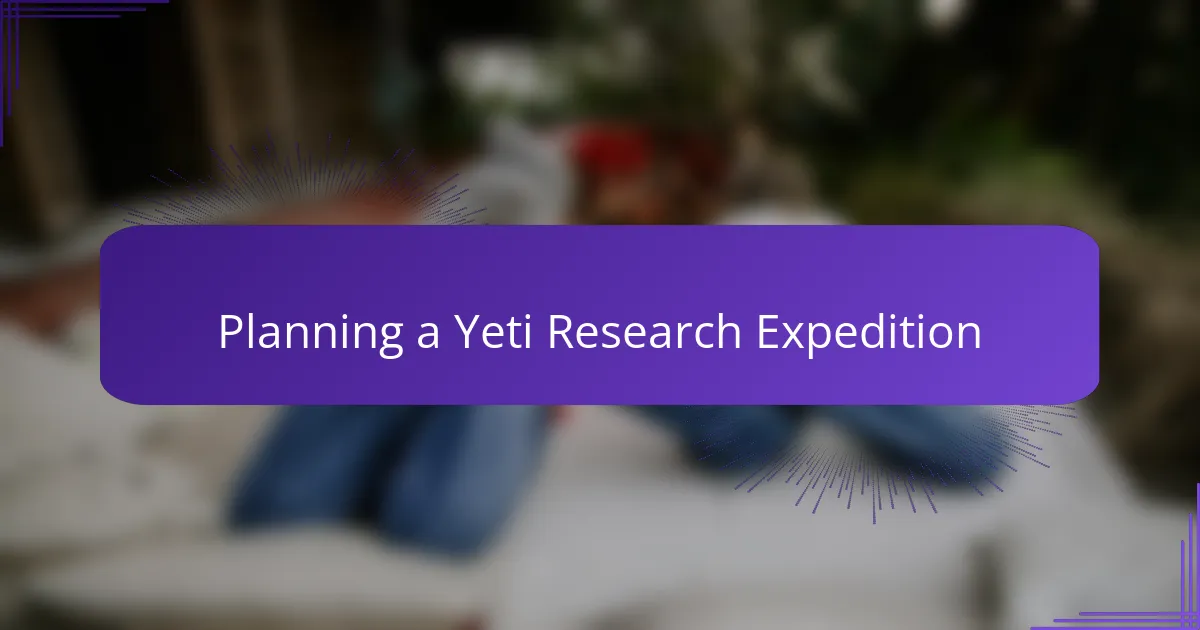
Planning a Yeti Research Expedition
Planning a Yeti research expedition demanded more than just mapping routes on a rugged map; it required immersing myself in the rhythms of the mountains and the lives of those who call them home. I remember poring over satellite images and weather reports, constantly asking myself, how can I prepare for the unpredictable Himalayan elements while staying respectful to local customs? Each step of preparation felt like a delicate dance between science and sensitivity.
Organizing the right team was another challenge that taught me the value of diverse perspectives. I reached out to biologists, seasoned trekkers, and even local guides who had an uncanny familiarity with the terrain—and yes, the stories. Their insights were invaluable, reminding me that any search for the Yeti isn’t just a solo adventure; it becomes a collective journey fueled by curiosity and respect.
Securing equipment was where practicality met passion. I balanced high-tech gear—the kind that could track elusive prints or record strange sounds at night—with simple tools like notebooks and cameras. In moments when technology failed or the mountain’s silence was overwhelming, I found myself leaning on those basic tools, wondering: Isn’t part of the mystery in what remains unseen and unheard? This preparation phase wasn’t just about readiness; it was an emotional commitment to chase the unknown with an open mind and heart.
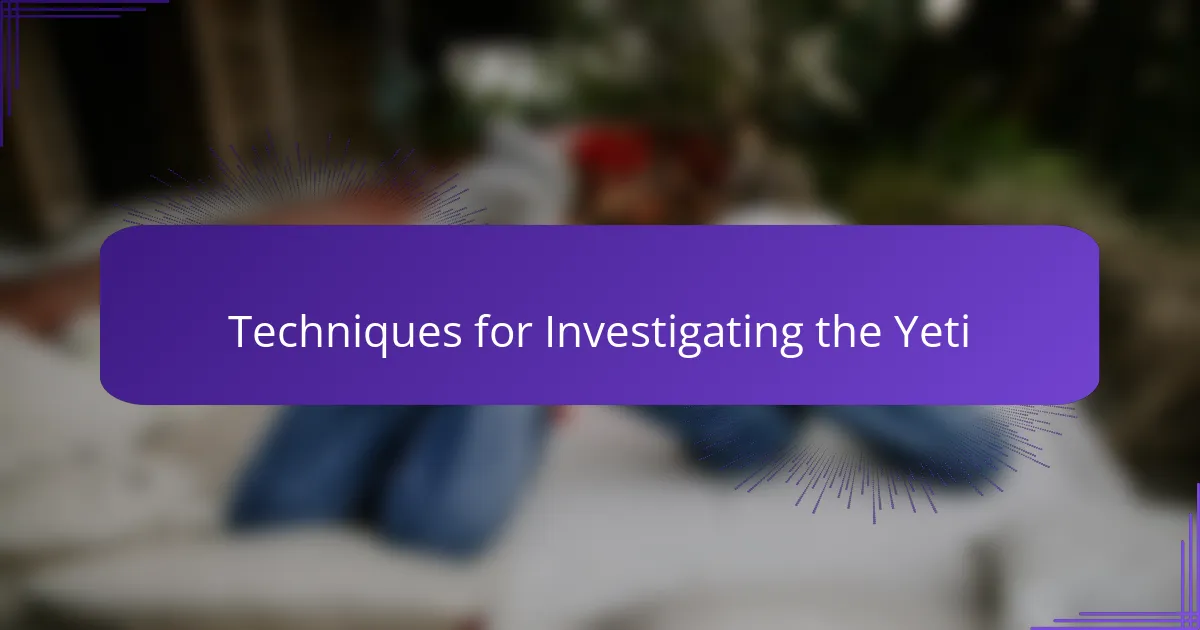
Techniques for Investigating the Yeti
When investigating the Yeti, I relied heavily on a blend of traditional tracking techniques and modern technology. For example, using infrared cameras and motion sensors helped me capture elusive movements that the [censured] eye might miss, especially in the dense Himalayan forests. Yet, I often wondered—could these devices truly detect something as legendary as the Yeti, or were they just tools to satisfy my curiosity?
One particularly memorable experience came from analyzing mysterious footprints in fresh snow. I remember kneeling down, feeling the cold bite at my fingers, trying to discern whether these prints belonged to a known animal or hinted at the unknown. It dawned on me how crucial it was to combine careful observation with local knowledge—villagers often recognized subtle signs that I, despite my gadgets, almost overlooked.
Sound recording was another technique I found fascinating. Setting up sensitive microphones overnight, I waited in silence, ears straining for any unusual calls or movement. Did the creaks, howls, or rustling actually belong to the Yeti, or were they echoes of nature’s own orchestra? This balance of skepticism and hope kept me both grounded and inspired throughout the investigation.
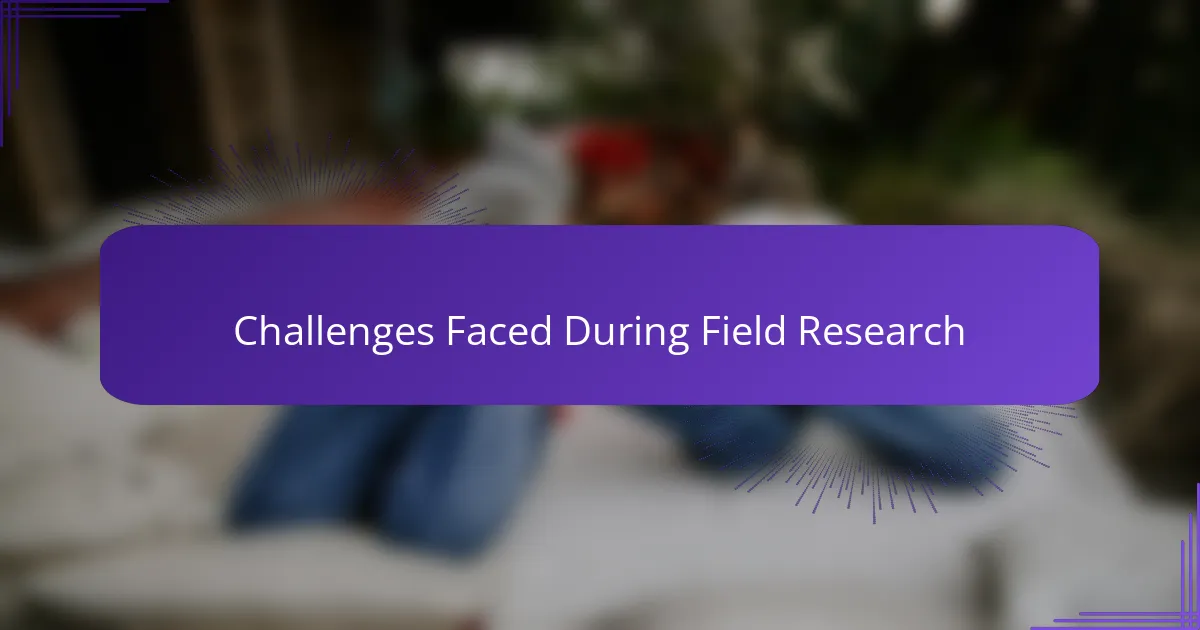
Challenges Faced During Field Research
The first challenge I faced was simply navigating the harsh Himalayan terrain. Trekking through freezing temperatures and unpredictable weather tested my physical limits more than I expected. Have you ever felt so cold that every step forward feels like a small victory? That was me, reminding myself that patience and endurance were as essential as any scientific tool.
Another hurdle came from the elusive nature of evidence itself. Tracks disappeared with the next snowfall, and recorded sounds blended into the mountain’s endless natural symphony. It made me wonder—how do you chase a shadow that might vanish before you even see it? This uncertainty was frustrating, yet it deepened my respect for the mystery, teaching me that sometimes the search is just as important as the findings.
Finally, building trust with local communities proved both challenging and rewarding. Approaching deeply held beliefs with sensitivity required me to listen more than speak. I often found myself asking, how can I honor their stories without imposing my skepticism? It turned out that genuine curiosity and respect opened doors, turning strangers into trusted guides on this extraordinary journey.
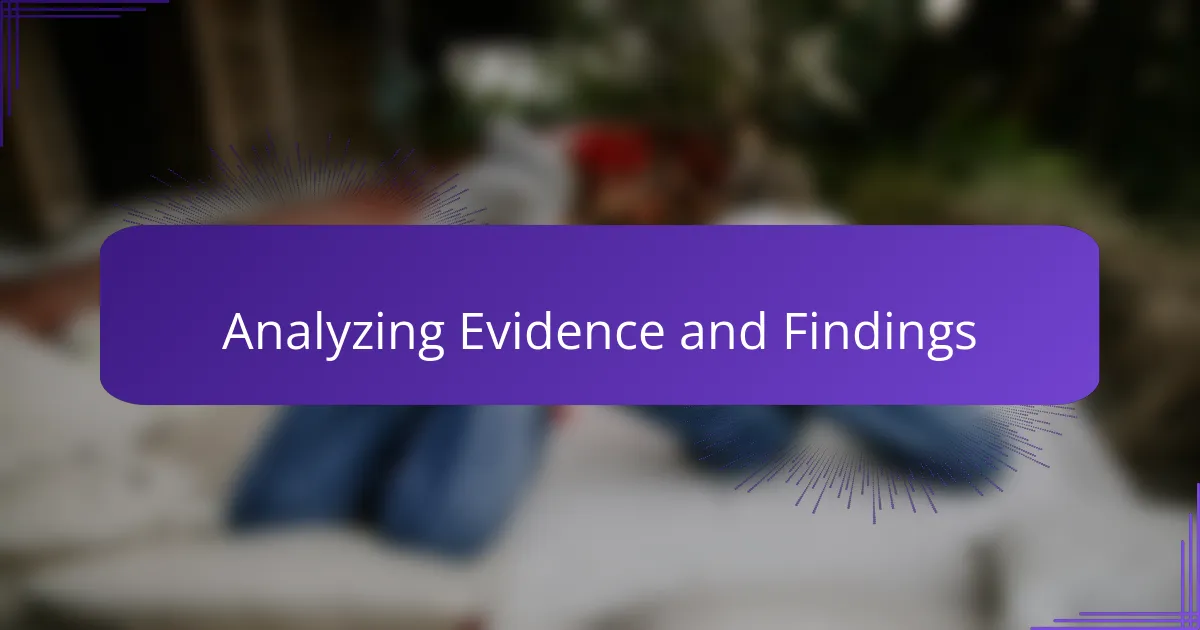
Analyzing Evidence and Findings
Sorting through the clues I gathered was an exercise in patience and humility. When I examined collected footprints, for instance, I kept asking myself: am I seeing the mark of a Yeti or just an unusual bear-track? That question haunted me, reminding me how easy it is to let hope cloud judgment.
Looking at hair samples under the microscope, I felt a surge of excitement mixed with caution—could this be proof, or merely a common animal disguised by the mountain’s harsh environment? The analysis was thorough, but I learned that even the clearest evidence demands context and an open mind.
Sometimes, the greatest finding wasn’t a piece of physical proof but the patterns emerging from local testimonies and natural signs. Could it be that the Yeti exists more vividly in the stories and the shared experiences of the people here than in any isolated artifact? This thought reshaped how I viewed every footprint and whisper on the wind.

Lessons Learned from Yeti Research
One lesson that really stuck with me is the importance of patience and humility. In a terrain as merciless and mysterious as the Himalayas, expecting quick answers is unrealistic. I often found myself wrestling with the question: am I chasing a real creature, or is this all a testament to our human yearning for wonder? That tension kept me grounded, reminding me that sometimes the value lies not in the proof but in the pursuit itself.
I also learned that respecting local knowledge is crucial. Early on, I realized that no amount of technology could replace the wisdom shared around firesides by villagers who have lived alongside these legends for generations. Their insights made me question my outsider assumptions—was I listening enough to the stories, or just scanning for data? This shift in perspective transformed my research from a cold investigation into a heartfelt exploration.
Finally, the elusiveness of evidence taught me a powerful lesson about the unknown. Footprints could vanish overnight, sounds blend into the mountain’s chorus, and the Yeti itself remained just out of reach. Have you ever chased something so intangible that it felt almost spiritual? That’s exactly what this journey felt like—a delicate dance between skepticism and belief, science and myth, reminding me why the mystery endures.